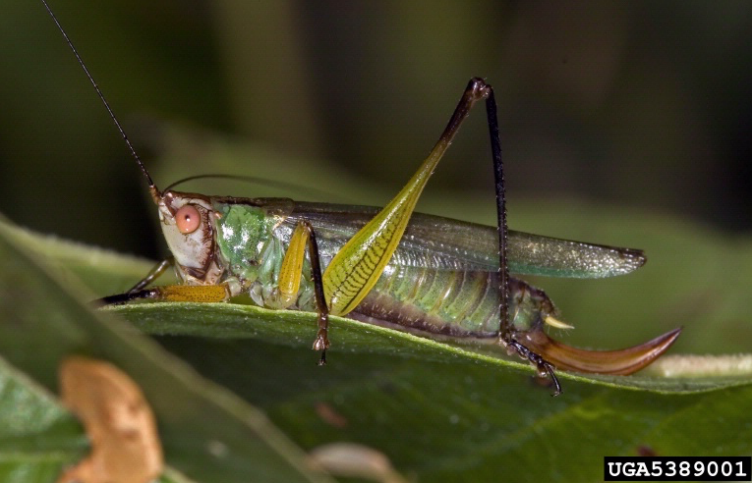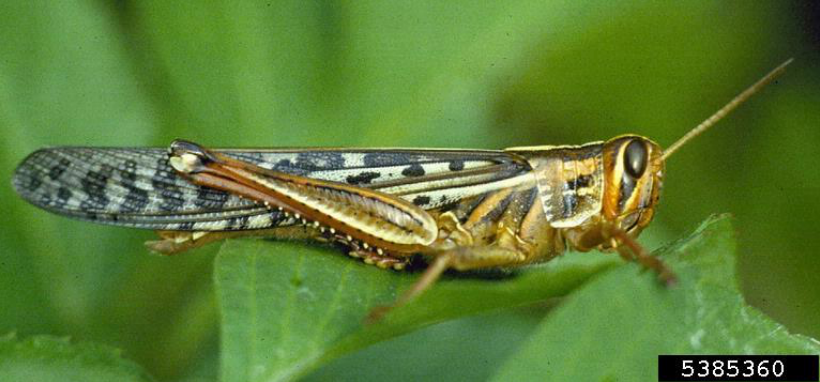(Orthoptera, Acrididae)
(Schistocerca americana) – American Bird
(Melanoplus, spp) – Melanoplinae
(Orchelimum, spp) – Meadow Katydids
Authors: Alton Sparks and David Riley, Entomologists, University of Georgia, 2021
Description
Immature stages: – American bird grasshopper eggs are elongated (7.5 mm x 2 mm), light orange to tan, and are clustered together in a pod of 75-100 eggs about 4 cm below the soil surface. Nymphs that emerge from the soil go through six instars and look increasingly similar to the adult as they grow, but without the developed wings. In contrast to other acridids that lay their eggs in pods in the soil, many katydids lay eggs in plant tissue.
Adult stage: Many Acrididae (short-horned grasshoppers) species can be found on leafy greens, but the American bird grasshopper has been a consistent contamination pest in Georgia. The adults are large (39-68 mm) with a creamy white dorsal stripe from the head to the tip of the forewing. The rest of the acridids are smaller and relatively hard-bodied (i.e., greater contamination problem). Meadow katydids are soft bodied, small to medium size, greenish in color, and bear long antennae.


Biology
Life cycle: The American bird grasshopper has 2 generations per year and overwinters in the adult stage. The eggs from the overwintering adults produce the spring generation and eggs from this population produce the
late summer-fall generation. Meadow katydids pass the winter in the egg stage in plant tissue, and nymphs emerge in the spring. Adults are common in the summer, but a peak of adults in September (possible a second
generation in Georgia) and eggs are laid again in the fall.
Distribution: Adult grasshoppers are most prevalent in the summer and numbers decline later in the fall. Meadow katydids tend to be more prevalent than acridids and all concentrate around the field edges.
Damage
The principal damage to leafy greens is as an insect contamination in mechanically harvested leaves. The contaminants often pass undetected until the greens have been steamed, chopped, packed and frozen resulting in considerable value-added losses. This a serious problem that can cause whole frozen shipments to be rejected.
Management
Since field insecticide sprays near harvest only increase the problem of contaminants, preventative treatments are needed to prevent the buildup of grasshopper in adjacent grass habitats.
